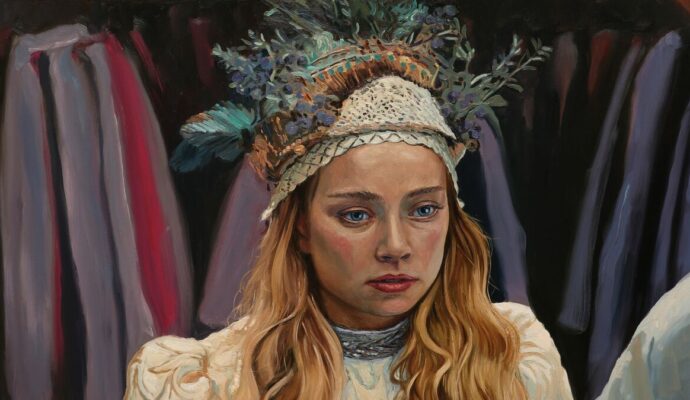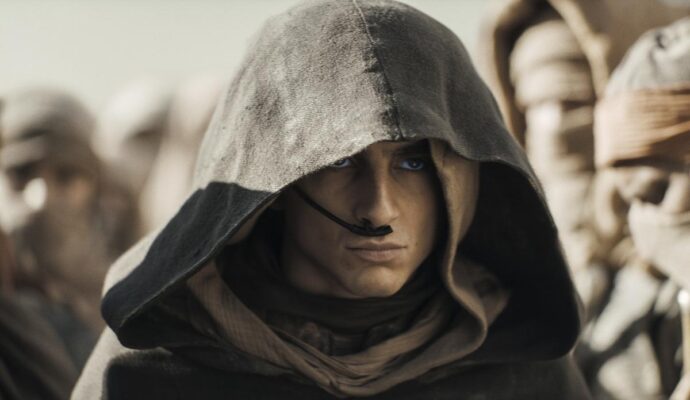“The Blackcoat’s Daughter” – “Creepy is better than just plain scary, because you can’t look away from creepy. You want to know the truth.” – Ransom Riggs
First-time director Oz Perkins made a confusing film.
He made a sinister, spooky, atmospheric, and confusing film.
Throughout much of its 1-hour 33-minute runtime, Perkins barely explains why events are set in motion and deliberately leaves the audience stranded at the mercy of the narrative. Perkins simply walks away, while we scramble to discern which room in Hades he just placed us. Truth be told, however, every single living and breathing second of “The Blackcoat’s Daughter” is creepy, and in the horror world, sometimes, creepy is enough.
Oh, we cannot look away either.
The Bramford School is where Perkins wants the audience to look. It is an all-girls boarding school, and winter break finally arrives. We know its wintertime, because crunchy snow covers the campus and not a leaf can be found on any of the surrounding dormant trees. School can be a place of great joy and camaraderie, but from the dour weather outside and the antiseptic rooms and hallways inside, every single girl might want to make a dead sprint for her parents’ car and ask them to run through every red light on the way home.
Two girls – a freshman named Kat (Kiernan Shipka) and an upperclasswoman named Rose (Lucy Boynton) – do not have a ride home, and the dean clearly explains that they cannot live here during the break. Somehow, they need to get home, but alas, Kat and Rose stay at Bramford anyway, sans any parental figures willing or able to pick them up.
Kat and Rose do not really know each other, and Rose could care less about Kat, but they both stay at school overnight, amidst of collection of darkly lit hallways and rooms. Now, institutions like schools or hospitals might feel safe and comfortable during the bustle of a busy workday. Conversely, try walking down the same corridors, but with zero souls accounted for in any direction, and the sound of one’s breath as one’s only companion. Attempt that same activity at night with barely any florescent light illuminating the hallways, and that is a surefire recipe for anxiety-ridden panic attack. (See also “Halloween II” (1981) or “The Exorcist III” (1990).)
Speaking of sounds, Perkins employs a disturbing score that seems to constantly drum during the entire picture and resembles industrial noise emanating from an oscilloscope via Guillermo del Toro’s or David Lynch’s laboratory of ideas. This otherworldly and unnerving racket clutters up our senses but perfectly fits with the film’s shadowy setting.
The film is dark, figuratively and literally. When trying to cut through the shadows, it is sometimes difficult to visualize what we are actually observing. Since the accompanying soundtrack is constantly buzzing as well, the end result is a hypnotic effect. Thankfully, Perkins snaps us out of the trance and introduces a third character to the mix, Joan (Emma Roberts). She resides off-campus, but we soon discover that she might be closing in on destiny, tied to the school in some way.
“The Blackcoat’s Daughter” has its way with us, and we are helpless to fight it off. This raw, low budget affair borrows from a couple classic movies of the genre, but in the end, it stands on its own with its disturbing style and tones. Walking away from the movie, one will probably have more questions than answers. I wrote this review with a designed vague intent, because quite frankly, I still have questions. More importantly, I did not want to give away the film’s main secrets. Well, it is no secret that “The Blackcoat’s Daughter” will sit in the pit of one’s stomach, as it extends its tentacles when taking root. Yes, creepy horror movies can have that effect, especially if one never really grasps the entire truth.
⭐⭐⭐ out of ⭐⭐⭐⭐




